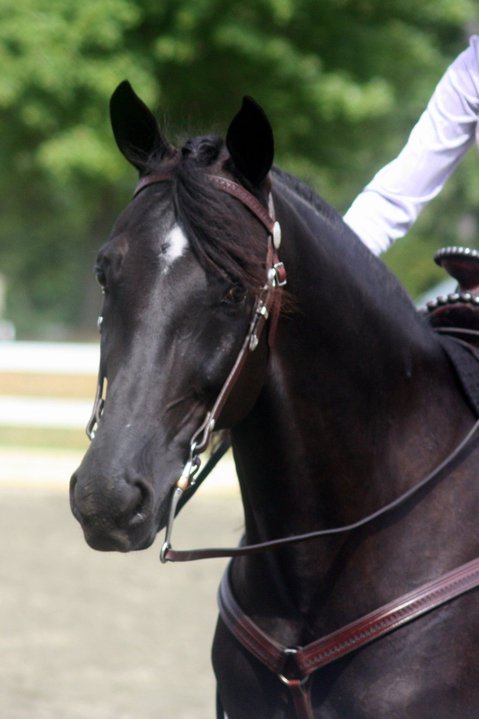The weather's been junk lately - a total roller coaster ride. I'm relieved that we missed out on the horrible ice and snow storms that assaulted my friends in other states, both north and south. This seems to have been about the only weather bullet we've dodged this year. Well, it's February now and almost time to think about Spring, I hope!
I get to ride intermittently. I planned to introduce Lar to riding out in the big back field when we had a milder day. I didn't expect much of a problem, since he's pretty laid back and he's been turned out there before. My ulterior motive was to lunge him there beforehand, where there's more room and I could encourage a canter. (I suspect he will be a tough nut to crack when it comes to cantering under tack. Even in turnout, most of the time he will trot his little heart out while the others canter. He's a good Standardbred. Maybe too good of a Standardbred... lol. He lands at a trot when jumping, too, so there went my Plan B for teaching the canter. He has a lot of scope for a horse that approaches and lands fences at the trot - I'll bet he can jump a lot higher once he learns to approach and land at a balanced canter. But I digress.)
Plans C for teaching the canter are lunge line work, since he's already shown a willingness to canter on the lungeline. If I can get him more balanced cantering circles on his own, maybe I can get him to associate the voice commands and balance with under tack work. Plan D is good ole Kentucky hills. If I have to put up with them, I may as well put them to work for me. Trotting up hills is hard work - very hard. Cantering up them is quite a bit easier. Once I get Larry to figure this out, maybe we can canter up them together. Another plus is that it is very difficult (not impossible, as my friend's OTTB has demonstrated) to buck while cantering up a hill. So he'll hopefully be less inclined to celebrate his accomplishment with airs above ground.
So I lunged him in the back field. And he put on quite the bucking and rearing show when I asked for the canter. So much so that I stopped him, checked his tack, and checked for signs of back or leg discomfort. I even removed the saddle. I didn't find anything. I still don't know what he was carrying on about. I had to abort plans to ride, except for getting on to walk him cool for 20 minutes because he'd worked up quite a sweat. Even back in the barn, he spotted the neighbor's cattle and got very alarmed until I led him into the yard for a closer look. The next day was windy when I pulled him out of the field. He seemed very distracted and snorty again. Valuing my own neck, I opted to lunge him in the back rather than try a ride. He bucked some, but not as badly. He cantered some, but not all that readily and he didn't stay balanced for long. Patience, steady conditioning, and persistence will be needed. Though my own impatience with this lousy winter weather makes the persistence part difficult.
Tune in next time for more adventures of Larry the Lipazzaner. (OK, I hope not!)

He does like to put on quite a show on the lunge line. He takes off cantering and bucking most times. He does have the ability to canter under saddle though! I have experienced it first hand! Though the last time I tried it started with a buck, but it's in there somewhere!
ReplyDelete